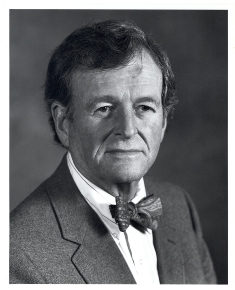Papers of Henry Swan Added to the National Library of Medicine’s Profiles in Science Web Site
The National Library of Medicine, the world's largest medical library and a component of the National Institutes of Health, announces the release of an extensive selection from the papers of American surgeon Henry Swan (1913-1996), who pioneered the use of hypothermia for heart surgery, on the Library's Profiles in Science Web site.
With this addition, the number of prominent researchers, public health officials, and promoters of medical research whose personal and professional records are presented on Profiles has grown to 33. The site is at: http://profiles.nlm.nih.gov.
Swan was born in Denver, Colorado, on May 27, 1913, to Henry Swan, an investment banker, and Carla Denison Swan. Both parents came from well-established Colorado families; his father's family owned the Swan Land and Cattle Company, and the Denisons had made their fortune in railroads. The Denison lineage also included many physicians, and this heritage inspired Swan to pursue a medical career. He received his AB from Williams College in 1935, and his MD from Harvard's School of Medicine in 1939. Following a one-year pathology internship at Colorado General Hospital in Denver, Swan did his surgical internship and residency at Peter Bent Brigham Hospital and Boston Children's Hospital. There he worked with Robert Gross, who was developing techniques to correct congenital defects in children.
During World War II, Swan served in the US Army's 4th Auxiliary Surgical Group (one of the first MASH units), which landed in France as part of the Normandy invasion in June 1944. By the war's end, he had performed over 1,600 surgeries. Returning home, he joined the faculty at the University of Colorado Medical School in 1946, becoming the first full-time faculty member in the department of surgery. There he helped to establish a surgical research laboratory and reorganize the school's curriculum, and began to distinguish himself as a surgical trailblazer. He served as chair of the department from 1950 to early 1961, and was a major force in its development as a first-class surgical program.
Like many surgeons of that era, Swan became interested in exploring ways to work on the vascular system and the heart. In 1949, after several years of experimental work with dogs, he did the first successful repair of an aortic aneurysm using a section of stored cadaver aorta. In 1953, again after several years of laboratory research, he overcame the biggest single challenge facing would-be cardiac surgeons: stopping or slowing the heart without depriving the brain of oxygen. Swan was able to safely induce hypothermia to reduce a patient's metabolic functions-and thus the need for oxygen-long enough to stop the heart and operate on its interior. Though not the first to successfully perform such a procedure (two other surgeons had done so the previous year), Swan quickly established himself as the foremost expert, performing hundreds of cardiac surgeries with hypothermia between 1953 and 1962. Surgeons from all over the world visited Denver during this period to learn more about Swan's technique, and he and his surgical team often traveled to demonstrate it to other institutions. (Well-known as an avid small plane pilot, Swan logged 20,000 air miles traveling to Chile, Argentina, and Brazil in 1958, and later survived three plane crashes en route to medical meetings in the US.) Although hypothermia was soon eclipsed by improved heart-lung bypass devices, which allowed much longer operating times, Swan's successful methods afforded many surgeons their first open-heart experiences. Likewise, his intensive laboratory research greatly expanded medical understanding of the physiologic and metabolic changes that could occur during cardiac surgery.
After more than a decade as a pioneering cardiac surgeon and medical educator, Swan resigned from the University of Colorado faculty in 1961 to devote his time to surgical research. He joined the faculty at the Colorado State University's School of Veterinary Medicine, where he introduced new standards in veterinary surgery and helped build a graduate program in veterinary research. He also pursued investigations into the relationship between body temperature and hibernation states, an interest that grew out of his earlier research on the physiological changes occurring during hypothermia. Studying the African lung-fish, which estivates in dry river beds during hot weather, Swan identified an active metabolic inhibitor in their brains ("antabolone"), which he hoped might be isolated and synthesized to enable an artificial hibernation for surgery. His research on hibernation, which included studies of ground squirrels and other animals, was incorporated into his book Thermoregulation and Bioenergetics: Patterns for Vertebrate Survival, published in 1974.
Profiles in Science features digitized correspondence, published articles, departmental reports, and photographs from the Henry Swan Papers at the National Library of Medicine. Visitors to the site can view, for example, Swan's college letters to his family, and his World War II letters to his wife describing his experiences as a surgeon on the front lines; correspondence with professional colleagues, and a rich selection of photos documenting his life and career.

Henry Swan, ca. 1981.
###
